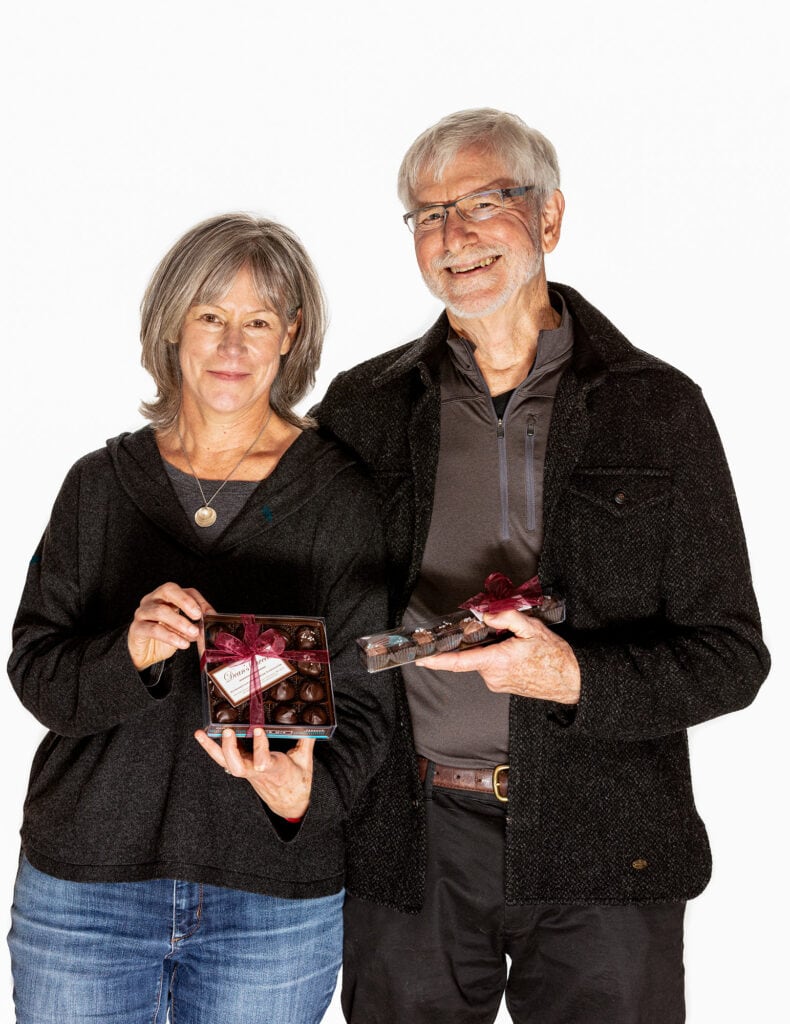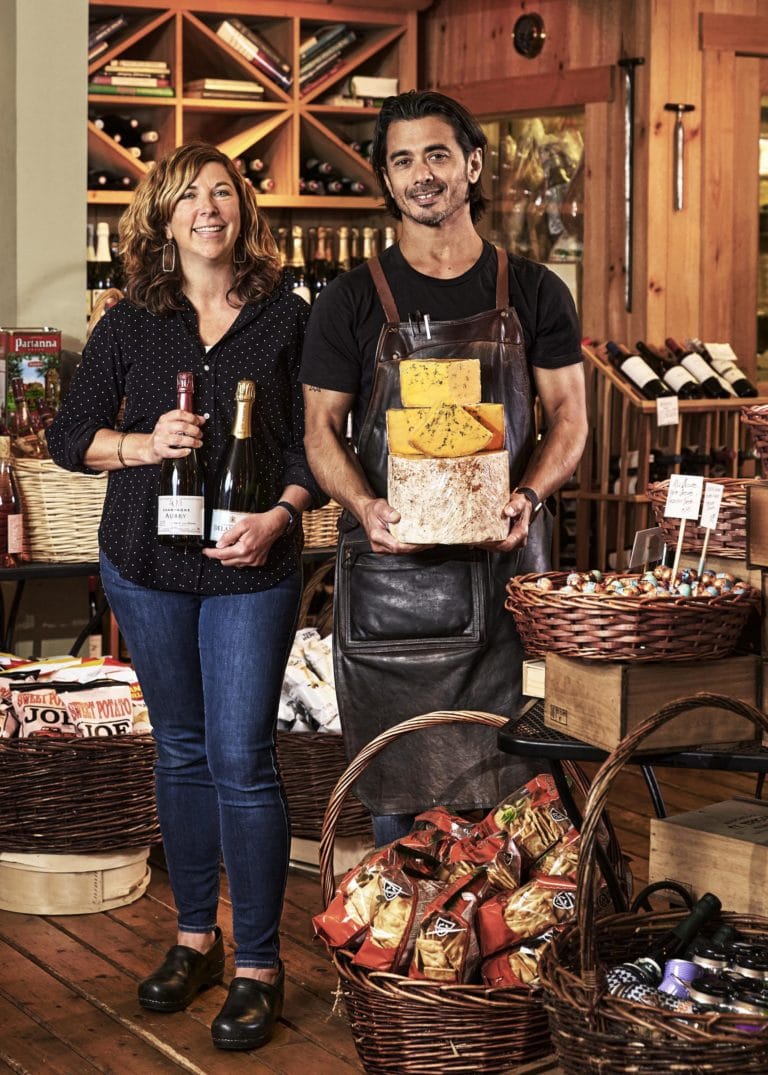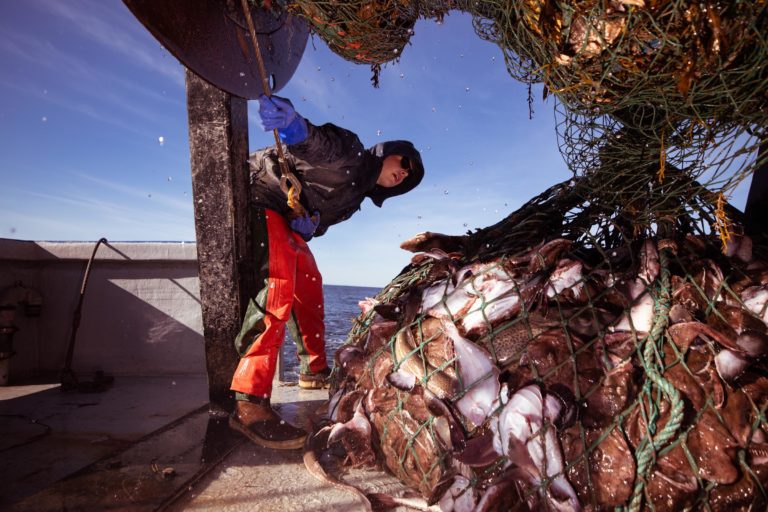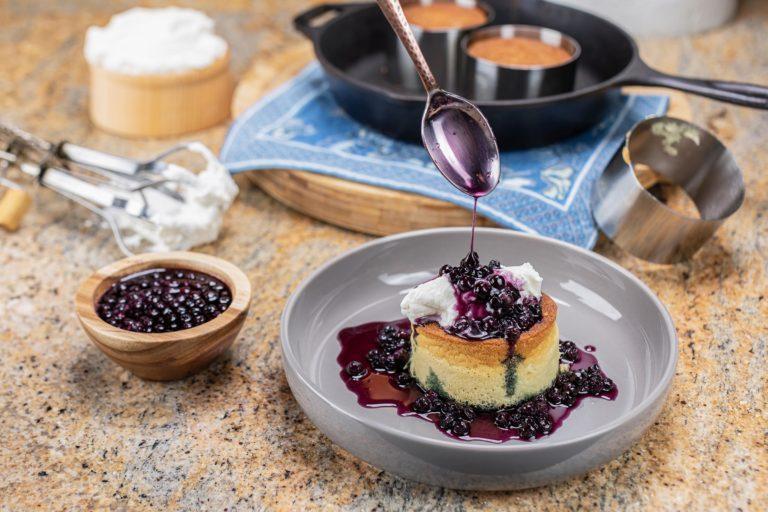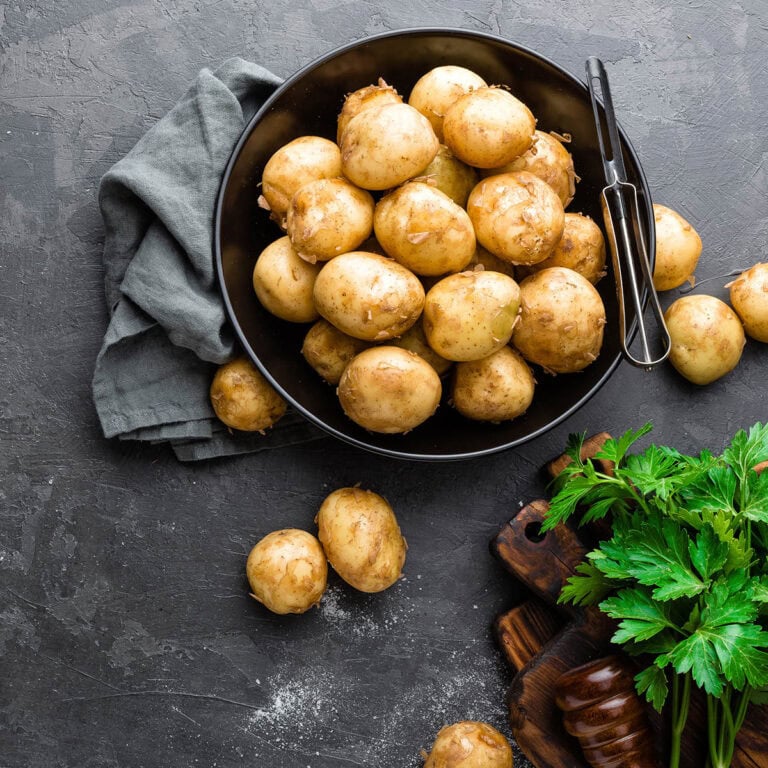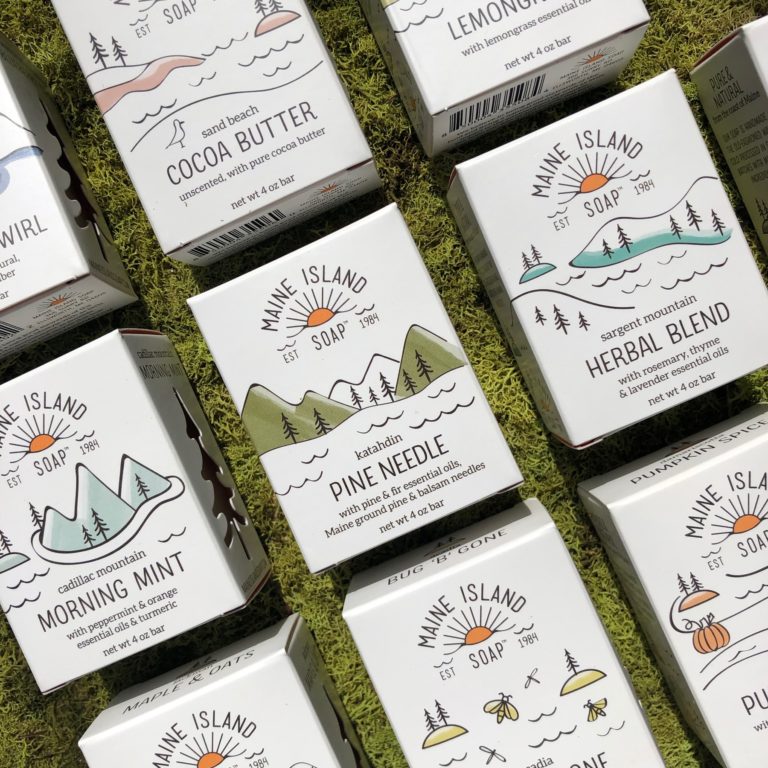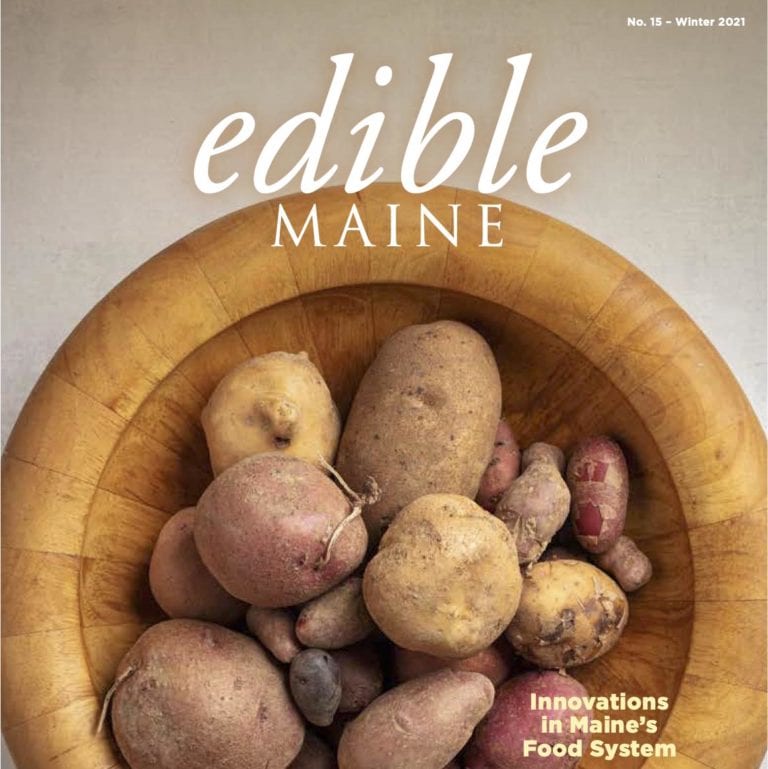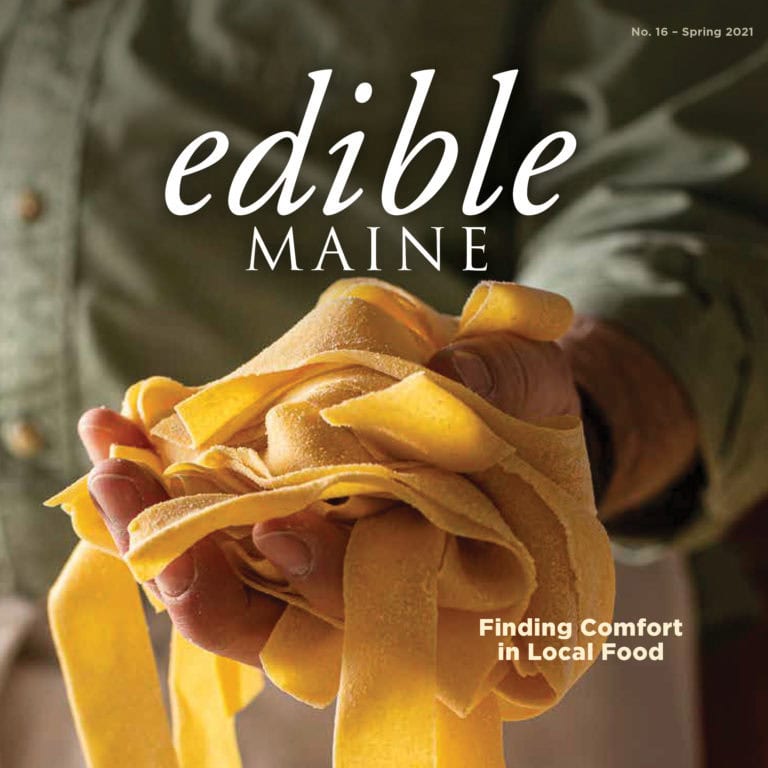Dean’s Sweets co-owners Dean Bingham and Kristin Thalheimer Bingham were working in architecture and publishing, respectively, when they started making chocolate truffles in their home kitchen in 2004. Now with a 1,200-square-foot commercial kitchen, the pair and their team of fellow chocolatiers hand-dip truffle, caramel, and buttercream fillings into imported dark, milk, and white tempered chocolate and sell them to adoring fans from two Portland retail locations. Their fillings for these treats are made with local ingredients, ranging from cream from Misty Brook Farm in Albion and butter from Casco Bay Creamery in Scarborough to beer from Allagash Brewing in Portland and potato chips from Fox Family in Mapleton. The couple recently sat down with edible MAINE editor-in-chief Christine Burns Rudalevige to chat about tempering, moderating chocolate intake, and Reese’s Peanut Butter Cups. The conversation has been edited for length and flow.
As an icebreaker, I just want to ask: a Snickers bar or Reese’s Peanut Butter Cups?
Dean: Reese’s, yes. Reese’s. Snickers are too sweet. Not that peanut butter cups aren’t very sweet as well. But the chocolate and peanut butter is a combination that’s always appealed to me. Maybe now that we run a nut-free operation, maybe it’s a novelty for me.
Is there any commercial candy with a sweetness level that is more appealing to you?
Kristin: I don’t get to the movie theater anymore, but I always really liked a box of nonpareils to snack on during the film. We make dark, milk, and white ones here. We hand-pipe those. And the sugar pellets now come in so many bright colors. They are fun to see all in one handful. They’re also a good seller for us.
When was the first time you tasted really good chocolate?
Kristin: We’ve taken tours in Belgium where I tasted extremely good chocolate there. I was really struck, though, by how beautiful each piece was, how the shops arranged the different shapes geometrically, and how nicely the chocolates were wrapped for customers to take home. I think the presentation affects the experience. But the first time I tasted exceptionally good chocolate—and this is no joke—I was tasting Dean’s chocolate. When I met him in 2000 or 2001, he was working as an architect professionally, but he was already working with chocolate in his kitchen. It might have been a chocolate brownie; he still makes excellent chocolate brownies. But it could have been a rum truffle. I can’t remember which of those it was, but I do remember it was completely different from all other chocolate I’d had before then.
Did you learn to work with chocolate in architecture school?
Dean: People often ask how I got from one profession to the other. I always say that architecture is designing structures to solve a problem. And I’ve learned that working with chocolate is all about solving problems. It’s not as direct a path as if I went to the Culinary Institute of America, but I do think my design background helps.
What’s a tough chocolate problem to solve?
Dean: Tempering is a challenge because it is more art than science. Yes, there is a decisive temperature at which dark chocolate melts, but the process is affected by the room temperature, by the humidity of the day, by the amount of conversation going on around the room that might distract you from watching the process and solving the problems that arise.
I know you’ve got machines that help with the tempering in your shop, but what’s the best way to temper chocolate at home?
Dean: I’d start it with a microwave and a Pyrex bowl because that will hold a little heat and help you maintain a steady temperature. Take two-thirds of the chocolate you are going to melt and warm it at 30-second intervals, stirring in between. It takes a while to become liquid, but when it does, you add a small amount of the chocolate chips, stirring until they disappear before adding the next bunch, and keep stirring.
How do you store your chocolate?
Dean: At room temperature and out of sunlight.
Have you ever overdone it on sampling the chocolate? Is that a chocolatier’s occupational hazard?
Dean: I tend to feel like I’m a little bit high after working with it all day.
Kristin: I feel the effect of chocolate more than I feel the effect of a cup of coffee. I feel the buzz almost instantly. And I can’t eat it after about 3 in the afternoon, or I’ll just be lying there fully awake at 2 a.m.
Is there anything you wouldn’t pair with chocolate?
Kristin: I think we’ve talked about everything and chocolate by now, haven’t we?
Dean: We often play with something normally paired with chocolate—like, say, ginger—and add something else that is a known pairing with that first ingredient, but not always with chocolate. So in the ginger example, we’d add wasabi.
Kristin: Our lemon, apricot, and chèvre combination is a popular one.
Dean: We have talked about a lobster buttercream filling. And I’ve done a blue cheese buttercream. That’s only got about a 50% approval rating.
Kristin: And we tried hand-dipping pickles in chocolate. They were a bit soggy. Maybe we should try dipping fried pickles?
Since you’re life partners and partners in a chocolate business, is chocolate still a welcome gift on, say, Valentine’s Day?
Kristin: I just gave Dean a gift of chocolate a couple of days ago because I took a little trip to St. Louis to see a friend and went to a chocolate shop. I had to bring some home because we’re always doing chocolate research. But no, after the holiday and Valentine’s Day rushes, we’re more likely to go out and get a nice bottle of something to celebrate each other.
